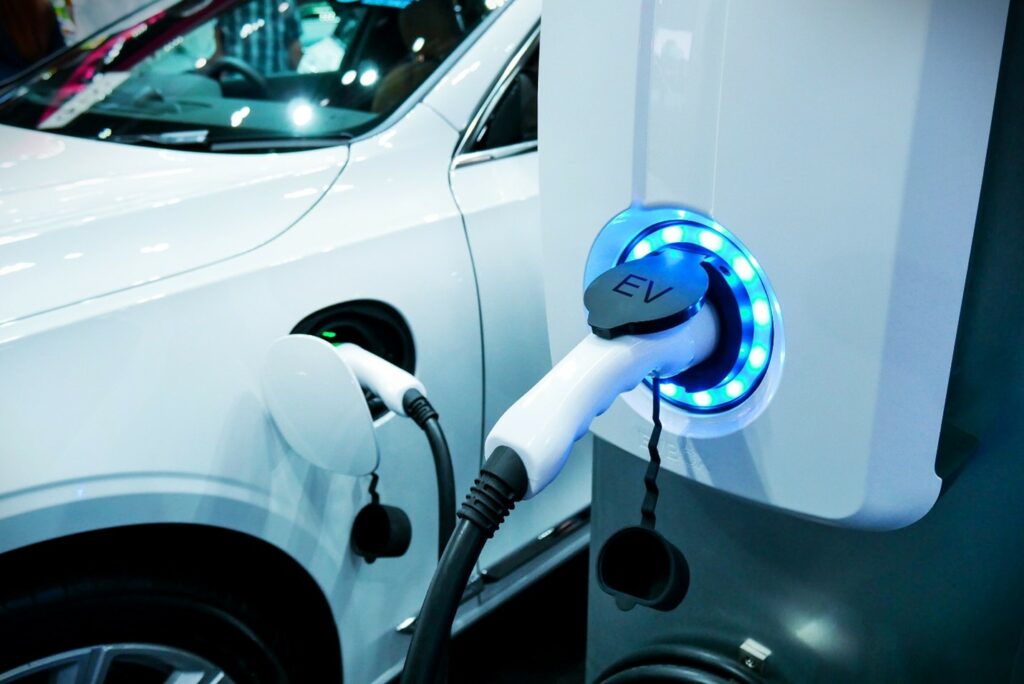Join us at the International Thermal Conductivity Conference (ITCC) and the International Thermal Expansion Symposium (ITES).
February 16, 2024
May 4, 2021
September 26, 2019
May 25, 2021
October 30, 2019

April 20, 2021
How utilizing different thermal transport properties can influence the efficiency of a battery-powered electric vehicle.
It is widely accepted that the global demand for electric vehicles is steadily increasing; however, there are still some significant hurdles that this industry will need to overcome before they begin to gain popularity among consumers. Some of these hurdles include extending driving range, enhancing battery longevity and increasing rider comfort and safety. Electric vehicles are a more sustainable and environmentally friendly alternative to combustion-powered cars, but they are unlikely to replace them on the global market without addressing these basic issues. One way to address these challenges the production companies face is to design the thermal management system, with the measurement and understanding of thermal conductivity, thermal effusivity (thermal effusance), and related properties. This system impacts many different vehicle components and has a major impact on the overall efficiency and function of an electric powered battery. While thermal management is already a key consideration in the design of many electric vehicles, there is no consensus on the best way to design this system for optimum performance. Production companies still express many conflicting opinions regarding the best way to construct and engineer an electric vehicle. Because of these disagreements, there are very few similarities among the big players in the electric car industry regarding the design of elements such as interior heating – cooling, battery cells, modules, pack construction, and type of electric motor used. One company uses cylindrical cells in their packs with an interweaved water-glycol coolant circuit. On the other hand, another company uses prismatic cells, while other companies are still dedicated to basic air cooling. Each of these system designs has its pros and cons; however, as more research continues to go underway to improve electric vehicles’ design and thermal mechanics, many of these companies will have to alter their thermal design to continue to compete in the expanding consumer market.

Figure 1: Electric Vehicle Charging.
For an electric vehicle to operate effectively and efficiently, the battery module’s temperature must be kept within a strictly controlled range normally between -30°C – 60 °C. The effects of these environmental conditions on thermal conductivity and thermal effusivity can be measured. If the battery is stored outside of this range, it will experience difficulty attempting to charge or discharge and could be at risk for permanent damage. When a battery is exposed to temperatures above the ideal operating range, its overall lifespan will significantly decrease, and it could experience irreversible impairment. Temperatures below this range, specifically below 0°C, can lead to a decrease in the voltage and charging abilities of the battery. In both scenarios, the battery’s performance and lifetime are significantly reduced, resulting in higher costs for the consumer and a decrease in the reliability of the vehicle. Due to the battery’s extreme sensitivity, it is crucial to store the modules within the defined temperature range. To do this, an effective thermal management system is required.
With the understanding of materials’ thermophysical properties, a well-designed thermal management system will maintain the batteries within a defined temperature range when the vehicle is exposed to both warmer and cooler conditions. The majority of electric vehicle batteries generate a significant amount of heat during charge and discharge which must be dissipated by a sufficient cooling system. Heating may also be required when the vehicle is operating in colder climates. Ideally, the thermal management system should maintain a uniform temperature among all battery cells in the entire battery pack regardless of the surrounding air temperature. If there is a difference in temperature between these cells, the battery’s overall health and charging capacity could be significantly affected.

Figure 2: Standard electric vehicle battery pack.
There are multiple heating and cooling methods that an electric vehicle can employ to promote a stable thermal management system. Leading car companies will use a combination of different techniques to increase the efficiency of their electric vehicle designs. Two of the most popular cooling techniques can be categorized as either passive or active methods. Numerous studies have compared the differences between these two heating and cooling methods. They have concluded that both active and passive techniques are required for an electric vehicle to operate over a wide temperature range. Most early models of electric vehicles used air for battery pack heating and cooling; however, recent studies have shown that this conventional heat dissipation method is insufficient, particularly for larger battery modules. An electric heater can be an alternative option for heating batteries, especially in environments that experience colder temperatures. The use of a coolant liquid, such as dielectric transformer fluid, is also superior to air for heating and cooling a battery. A dedicated refrigerator system can be extremely helpful for keeping a coolant liquid at an ideal temperature while driving. The downside to incorporating large equipment such as a refrigeration system or evaporator into the design of an electric vehicle is that it can be extremely bulky, complex, and costly. Ideally, a thermal management system should be light, easily packaged, reliable, and cost-effective.
Maintaining a comfortable and uniform cabin temperature can also help an electric vehicle operate more smoothly and efficiently. Gasoline-powered vehicles reuse engine exhaust heat to produce warm air that is used to heat the cabin. An electric vehicle does not have this source of heat, so it will use its general battery power to regulate the cabin’s temperature. Conventional air conditioners use an electric heater as a power source. This type of heater will dramatically increase power consumption and drain the car battery making it an undesirable option for an electric vehicle due to the significant reduction in the driving range. An alternative to a conventional air conditioner is a heat pump. This system is commonly used for heating and cooling the cabin of an electric vehicle and has a minimal impact on the driving range. A heat pump can regulate the temperature inside the car cabin by using the temperature difference between a refrigerant and the outside air. This provides a heating effect without consuming too much energy. The external capacitor, one of the heat pump’s main components, absorbs heat from the atmosphere and then compresses it to create high temperature forced air. The cold air occupying the cabin is then heated as the compressed hot air blows in from the air conditioning grilles. After the heat decompresses to a lower temperature, it is released out of the car. In the summer, heat is absorbed from the inside of the cabin and released to the outside by the external capacitor. These two-way heating and cooling systems make a heat pump unique compared to other conventional methods that just use air.
An additional component of electric vehicles that can play a critical role in maintaining an efficient interior thermal management system relates to the thermal effusivity (thermal effusance) of the materials that the vehicle interior is made of. Thermal effusivity describes the feeling of warmth or coolness when touching a material, which explains why metal feels cooler to touch than wood even when these two different materials are exposed to the same surrounding temperature. The heat transfer occurring from the skin to the metal is much faster than the heat transfer between the skin and the wood. Thermal effusivity is equal to the square root of the product of a material’s thermal conductivity and heat capacity. A material with high thermal conductivity will also exhibit a high thermal effusivity. For example, silver’s thermal conductivity is measured at 406 W/(m/K) and displays a thermal effusivity of 32520 Ws.5/m2K. The relationship between these two thermal properties is evident when comparing these values to those of wood. Wood has an average thermal conductivity of 0.194 W/(m/K) and a thermal effusivity of 526 Ws.5/m2K. Vehicle interiors such as foam and polymers exhibit similar thermal properties to wood. They are frequently selected during vehicle design due to their energy-saving capabilities from having a low thermal conductivity and thermal effusivity. This measurement can be used to design materials to feel warmer to the touch at any cabin temperature, reducing the amount of active surface heating or bulk cabin heating to create the same feeling, thus reducing energy consumption. Thermal effusivity can also be used to accomplish a feeling of coolness in the interior elements, such as wanting synthetic materials to feel like the authentic equivalent.

Figure 4: Modern Electric Vehicle Interior.
The measurement of materials’ thermophysical properties can be used in the design and engineering to create a more efficient thermal management system. One good example is Thermal Effusivity, which can be used to measure and select a material with a low thermal effusivity, decreasing the amount of heat absorbed and exchanged within the cabin. These materials are ideal for seat fabrics or dashboard coverings because they significantly reduce the load on the AC unit, which reduces energy consumption. A thermally optimized cabin will lower the heat load inside the vehicle, which will lead to a reduction in emissions, fuel consumption, and thermal discomfort. The design of an electric vehicle should consider all thermophysical properties to facilitate an effective thermal management system. Understanding these properties, along with active and passive thermal management, can dramatically impact the lifespan of the vehicle’s battery module, which can affect how well the entire vehicle operates. Many of the leading manufacturing companies in this industry are constantly attempting to design a more efficient thermal management system by experimenting with different thermal techniques. New technology has allowed these systems to become more refined, leading to an increase in consumer demand. Electric vehicles are a practical and effective alternative to conventional combustion engines, which are currently inflicting harm on our environment due to their toxic emissions. With the assistance of efficient thermal management systems, the popularity of electric vehicles will continue to climb as well as their comfort, lifespan, and safety.
Author: Kallista Wilson | Junior Technical Writer | Thermtest
Duan, X., Naterer, G.F. 2010. Heat transfer in phase change materials for thermal management of electric vehicle modules. International Journal of Heat and Mass Transfer. 53(23-24): 5176-5182. https://doi.org/10.1016/j.ijheatmasstransfer.2010.07.044
Rashid, R.M. 2018. Thermal Management of Vehicle Interior Temperature for Improvement of Fuel Economy. Electronic Theses and Dissertations. 7564.
https://scholar.uwindsor.ca/etd/7564
Glossary of Terms and Definitions. (2020, April 22). Retrieved July 10, 2020, from https://thermtest.com/thermal-resources/glossary